by Kelly Ann
(Pictures in this post are not to be used without permission. I’m sharing them as I think they help illustrate what a mission with lots of Sisters can look like and a few of my other thoughts about the change in the missionary age limit as a returned missionary.)
My mission was unique. Without any sister specific destination like a visitor center, sister missionaries comprised somewhere around 25% of my mission in Southern Chile. There were probably about 40-50 Sisters to 180 to 200 missionaries for most of my mission. My mission president, and the one before him, specifically requested Sisters – with possibly as many as 60-70 at a time at the peak before I arrived (which in part decreased to President Hinckley’s infamous conference talk, but that would be a different story). My mission president said he requested Sisters because we were often more effective in the small towns and could get in doors the Elders could not. He told us we often baptized more Priesthood leaders and whole families. Ok, technically we didn’t baptize, we taught people with the intent to be – but were encouraged to help our investigators make a connection with a member of the branch or ward who could perform the ordinance, which helped with retention after we left as well as took away the sting of having to ask an Elder to do it.
As consequence, I don’t wonder what a mission would look like with more Sisters – as discussed in response to this weekend’s announcement lowering the age limit on various blogs including here at the Exponent and ByCommonConsent.
I was in zones with more Sisters than Elders.
My mission had an “Hermana Asistente” who coordinated splits between Sisters and fielded Sister-specific questions in an area. The mission president’s wife put together a “conferencia de Hermanas” on a couple of occasions. We were allowed to contact her directly for health concerns (maybe too much information for some, but given the humidity of my mission – i.e. 200 inches of rain a year – vaginal yeast infections weren’t uncommon). But in fairness, the zone leaders and district leaders didn’t make a big deal out of Sister’s issues, not that we really had that many specific issues. I felt treated like an equal. The expectation to teach, to baptize, to reactivate, to encourage people to go to the temple, to give “bendiciones de hogar” (a prayer blessing the house as an introductory tool to the church, which we began with “having authority as a missionary”, rather than with “having the authority of the priesthood” as the Elders did) was the same. Granted my mission wasn’t all rosy – it was very physically demanding in the foothills of the Andes and my major complaint looking back was that I never felt like I was doing enough when I was giving it my all (that would be a separate post) and the Elders sometimes drove me crazy regardless …
However, overall, I loved my mission. It changed my life. I went from being incredibly shy and soft-spoken to gaining confidence. I loved the people of Southern Chile. I loved the church. I loved feeling I could make a difference teaching investigators, training members, reaching out to inactives, and even just listening to people’s experiences. And to anyone who has asked, I have long recommended serving a mission to any woman that was interested even though I have been honest about some of the negative aspects as well. It thrills me that lowering the age requirement means that more women who may want to will consider going. And that more Sisters could serve in missions with ratios like mine – that the exception of my mission might become the rule.
If I had been able to serve a mission at 19, I would have. I knew at 16 that I wanted to serve a mission. It mad me mad that I had to wait. But also kind of glad that I could finish my degree and work a little first (I graduated early). I think my life experiences made me a better missionary. However, it would have been a much easier transition to grad school if my upper division chemistry hadn’t been so rusty. I went because I felt called to. I had a simple faith, passion for Christ, and – even if not fully acknowledging this fact – felt that if missionary was something that was so important that the men were expected to go, that I would too. I submitted my papers to enter the MTC, putting my availability date as my birthday and entered the first Wednesday after I turned 21.
Upon entering, I was surprised to learn of people who had been granted exceptions – missionaries who had their birthday in the MTC or children of mission presidents. But honestly, they were only a couple cases and I never thought much about it. So I was taken back again in this weekend’s announcement that so many 18 year olds had already been able to serve given country specific policies. President Monson, Elder Nelson, and Elder Holland all cited the exceptions as reason for making an universal policy.
It moved me to hear how many people had asked for exceptions – whether in countries like Britian which do not allow for an interruption in education or for those with military obligations. After all, I served in a country that has varied between having compulsory and voluntary service. The majority of the local Chilean Elders I knew were older due to obligatory military service at 18 at the time. In fact, in thinking about it now, I believe one of them requested a special consideration on the opposite side of the age spectrum leaving at 26. And while military service is now technically voluntary, after googling a little, I learned that last year Chile instituted a draft of 50000 young people. I imagine a cohort of them applying to go early on missions in order to balance that responsibility – whether to postpone it or to try to get out of it. The kicker being my understanding (which I acknowledge is limited) is that both women and men can be drafted, so that women have also probably been asking for the change. Going at 19 will help them – although I wish everyone had the option to go at 18. But it really makes me happy that people asking for change effected a great change and the cascade of changes that will likely follow. Even if it shouldn’t have been revolutionary. As TopHat mentioned in her comments on the earlier exponent post, I like seeing how the international church is changing the whole church.
However, in thinking about my mission, the thing I loved about serving was getting to know the diversity of Sisters present. There were a few like me who went right at 21 – but most had made a conscious decision in their early 20s to go. I served with life time members as well as new converts. But what set my mission apart, was that we had a number of older Sisters. It is often a forgotten fact that there is no age cutoff for women. Men can only serve until they are 26, whereas our mission had women in their 50s, 60’s, and 70’s. They brought with them wisdom of life.
In fact, I think another thing that set my mission apart was that so many of the Elders were older due to previous military service. It actually disappoints me that the change could mean many are likely to go on missions when they are younger. I hope people will still realize that there are options within the age limits. I’d like to see the emphasis to go when you are ready and when you want to as mentioned in the press conference. There should be no embarrassment for a man or a woman to leave at 25. I’d also like to see more older sister missionaries. They were some of the best missionaries I knew.
I want less homogeneity in the missionary program. Perhaps it is because I want missionaries who recognize some of the problems with the church. I want sisters who have had their feminist awakenings. Because as much fun as it has been to reminisce about my mission, and realize I was lucky, I couldn’t go back on a mission in that I have become disillusioned with the church and specifically Joseph Smith. I sometimes feel a little bit guilty about having preached a simplified portrayl of the church – even though it was my knowledge and belief then. I hope that in the churches call for more missionaries, a reason stated for the age change, that diversity will still exist amongst missionaries even if their average age decreases.
But it is kind of ironic that while I want there to be missionaries with more knowledge and experience, I hesitate even returning to some of my areas in Chile on an impending vacation. I don’t want to disillusion the people I knew by learning that their missionary is happily now borderline inactive. But then part of me thinks it would be good for them to see a liberal feminist returned missionary to portray something not so homogenous – especially if it is otherwise not out there. But then the next part of me thinks I’m simply not up for it. That there are others better suited for the task. And I hope that there are.
Anyhow, these are just a few of my thoughts on my perception of the change. While there has been lots of conversation already here, and throughout the bloggernacle, and media, I would love to hear more thoughts. I’d also welcome any questions or comments on my perspective.
[And yes, I realize you may notice in the photos that our attire was also somewhat unique – it was much too cold to only wear nylons. If sister missionaries were allowed to wear pant suits, now that would be revolutionary ;-). Part of the reason I am sharing the pictures is to expand the missionary image in several different ways.]


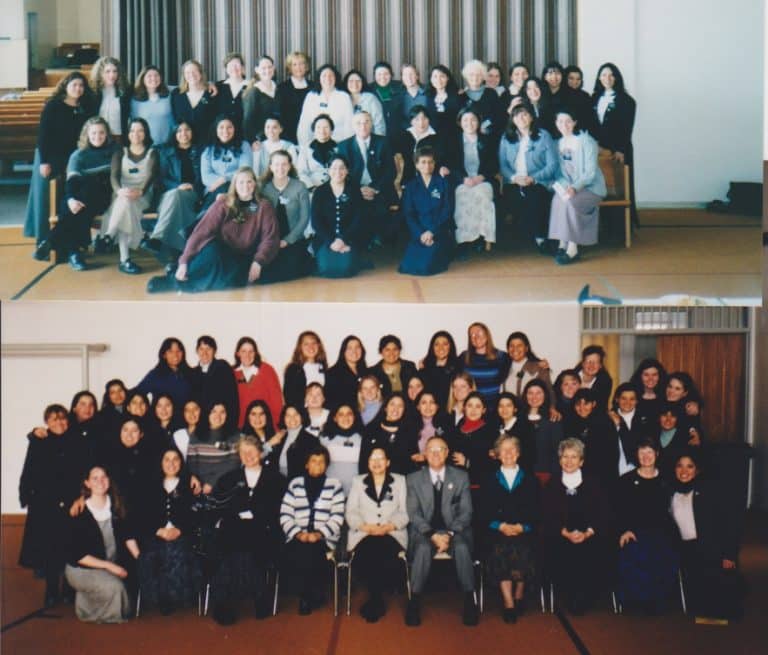
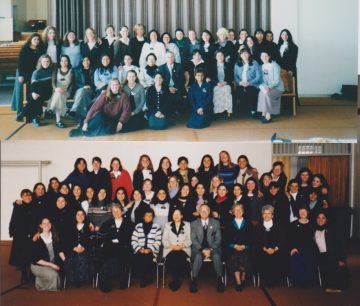
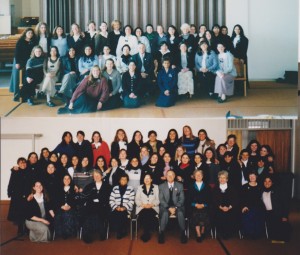

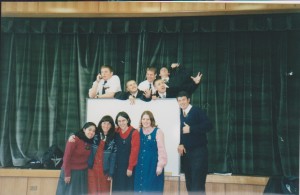
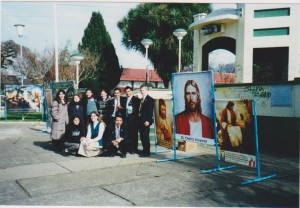


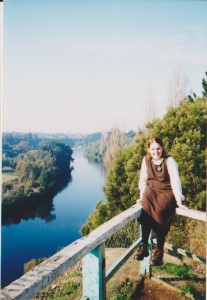
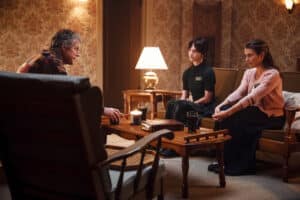

11 Responses
‘Perhaps it is because I want missionaries who recognize some of the problems with the church. ”
This sentence really just jumped out at me. There’s a bit of a dichotomy with that sentence because even if you have missionaries who are “willing” to recognize the problems with in the church, I certain doubt that they are publicly address them with any potential candidate. If the problems are addressed, it will probably be glossed over. Though I think it would be helpful for the missionaries to know about some of the problems with in the church given the fact that people now how internet access and can look up these issues for themselves.
Diane, yes I see the problems with my statement. I also don’t know it would practically be possible. But I do want their to be more open conversation about the history of the church and problematic doctrines, because I don’t want converts lured in. I also think it would be great if missionaries were prepared to answer the questions of disenfranchised members. I think it would be more effective in helping people feel comfortable. But I don’t really expect any of it.
In case I didn’t make myself clear, I actually completely agree with you, and I also agree with your assessment. When I joined the church (well over 20 years ago) the internet hadn’t reached its hey day yet. So, I didn’t know any of the real history.
I use to be one of the members who couldn’t understand why people had such negative things to say about the church. to paraphrase Pres. Kimball,” They leave the church, but, won’t leave us alone.” Now, on the other side, I completely understand. The church wouldn’t have near the problems it does with regard to how people perceive Mormons to be.
Part of the problems with expecting Missionaries to be able to discuss these problems comfortably as well as accurately is the fact that Missions are generally the first time missionaries are away from home. Most, (not all) have come from pretty sheltered homes where they are not taught to question what Mom/dad and extended family have taught/ indoctrinated them. With the current lowering of the age the problem will be compounded.
Diane, thanks for explaining further. I agree with you. But fully admit to thinking aloud in writing the post and comments.
I wish there had been more sistsers in my mission. For most zones, there was only one set, with the bulk of them being concentrated in the big city. So usually you never saw another set between Zone conferences, which were usually combined between two zones.
I turned 21 in the MTC, but it wasn’t an exception, or at least I had not sought one. I put my availability date as my birthday, and they called me before that so I was 20 when I was set apart, but not for very long. Birthdays in the MTC = not fun. I looked as fashionable as you did — we usually wore fleece pants under our skirts (rolled up) and I wore layers of ski socks and tights to try to keep warm. I looked like a roly-poly penguin in winter.
Mhana, I like your description of being a roly poly penguin. I was that for sure. In the coldest areas, I wore thermal garments with leggings on top, covered by one or two pairs of socks. I am grateful for having nice knee high socks. I had tights as well but didn’t wear them as much. I also extremely greatful to a friend who had served in thailand. She recommended vasque hiking boots. They lasted my whole mission and kept my feet dry. You should have seen the looks in the mtc. I did wear nylons in the mtc but sent them home before I left. I kept my one pair of more standard shoes for conferences.
I really enjoyed learning about your mission experience, Kelly Ann, which demonstrates many benefits I also experienced of having women working alongside the younger elders where we respected each other with affection. (Incidentally, I and each of my companions followed mission rules in fact and in spirit, but later married men we met on the mission or in the Mission Home–no MTC then.)
In 1960s French missions, there were a relatively high number of women serving as missionaries. Getting acquainted with some of these women when I was a student in Tours in 1963 played a role in my desire to serve a mission. “Local Missionaries” could serve at younger ages and for shorter terms, and I asked to serve under those “rules,” beginning my mission three months before my 21st birthday (and not endowed until a temple trip to Switzerland 2-3 months after I started).
While there will be less than ideal “unintended consequences” of the new policy, I think it’s generally a move in a positive direction toward women’s equality in the church.
Kayg, thanks for sharing your experience. Interesting there were some marriages from missionaries who served together but they also didn’t really get to know each other until afterwards when they were at the institute in school in santiago. I did a little inquiry online and found a recent mission presidents blog. He references only having 22 sisters. While still something, as I don’t actually know the mission size since it was split since I served, it also made me appreciate that dynamics change. I am glad to hear you had a good experience in france.
Kelly Ann,
I had to look twice at some of your pictures, because they are very similar to picture of my mission. I served in Vina del Mar from 1992 – 1994, and we had similar ratios of sisters as your mission. We had “conferencias de las Hermanas” as well but we didn’t have Hermanas Asistentes, although it would have been helpful. I loved having so many sisters in my mission. I had companions of many age ranges and nearly all of them were Chilean. Thanks for your insights.
Thanks Andrea for sharing your experience. Since I didn’t mention it in my post – I served in the Chile Osorno Mission from 2000 to 2001. It has since been split into two missions Conception Sur and Osorno, and because I served from the very north to the very south, encompassing both missions, I just refer to it as southern chile.
And yes, I mostly had native companions from chile and argentina. In a way I wonder if many of them didn’t have the same reservations to serving as the americans did.